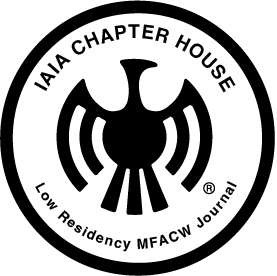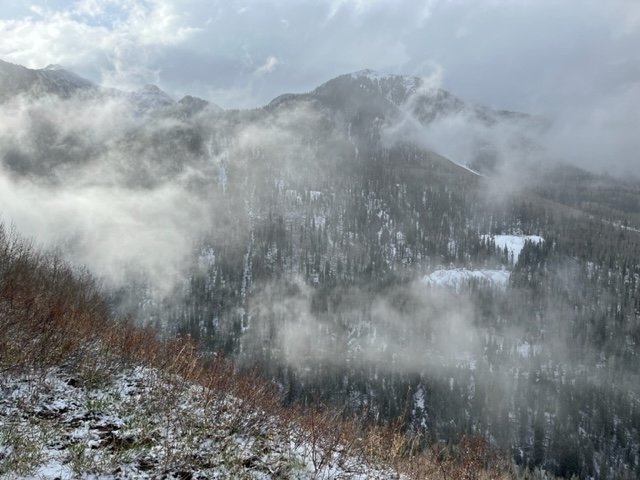Editor’s Note Winter 2025
by Claire Wilcox
We are entering a new era, and I can’t help but think it will be a dark one. My whole life, I’ve believed that we were generally on an upward trajectory. I believed that, despite the ups and downs, we were steadily making progress toward reversing the damage wrought by colonization and creating a better world, at least when it came to social justice, inclusion, LGBTQIA rights, women’s rights, and diversity. Also, even though the political machine was stalled, I continued to hold on to a sliver of hope that soon, we were going to turn our attention back to our natural world and figure out how to curb, if not stop, the devastating effects of climate change and that we might even begin to worship nature again. I had a felt sense that kindness, in the end, would prevail over evil.
Now, I think that I’ve just been in denial.
In the Winter 2025 Issue, I find companions for my fear, anger, grief and despair in pieces like “Fancy Dance Fire” by Jake Arrowtop and “Jagged Metal Pieces” by Noah Milligan which explore the worst of what can happen when we are cut off from or ancestral origins and authentic selves; “the Portrait of The Varginha, Brazil UFO Incident” by Karl Michael Iglesias reminds us that when combined with ignorance, dominant culture wreaks havoc; D. Kealii MacKenzie’s “Into Silence: a reverse burning haibun” and Jalen Lee’s “uncle in the gleam” pull us into the depths of the suffering of disconnection. Literature helps us really see the truth of pain, and this is important; we must see what is truly happening and not turn a blind eye.
Great writing also shows us through story and imagery how to transform difficult emotions into something tolerable, even beautiful. “Eulogy of the Living” by Maru Yang and “Tradition” by Jennifer Wang give their characters a way out of the deepest suffering of grief, the former by being in the now, the latter through connection. Esénia Bañuelos in “Subimos Coyotes (We Mount Coyotes)” and Malia Maxwell in “‘Ula” remind us to attend to and revere our connections with spirit and nature.
Also, here, you’ll find a repeating reminder that no matter how bad things get, no one can take our joy from us. Veneron Yazzie in “Down the road somewhere” models how we can seek it out in nature, and Michaela Raen in “Moondancer”, in relentless creative expression.
And as for the eternal question, “What can I do?” in the face of forces that seem too powerful to directly battle? Hannah Henry in “Ikhaiyana” highlights the importance of never losing touch with our people; “The Year of The rat” by Elaine Ferrell nudges us to be ourselves no matter what; “Tyrus” by Wakaya Wells reminds us not to keep our eyes open for signs pointing us towards our true purpose and to follow them; and “Backfire” by Jeanette de Dios illustrates that identity is a work in process and that working towards becoming our authentic selves is a vital act, especially in the face of current or historical oppression. Kirbie Bennett in “LOOK AT THE WAY..” reminds us that “history swirls in circles”, urges us to “never stop believing” and in the end reaches out to the reader, inviting, with two open hands.
Finally, Megan Dorame in her prize-winning poem, “what blood is the salinity of saltwater” stresses that our task, as writers, is to tell to tell the stories that ring true, and to inhabit our most vulnerable, honest selves.
The last ten years has seen an explosion in the popularity of Indigenous literature. We still have or voices, and the world is listening. Let’s heed what these talented writers are telling us.
As Dorame says in her piece:
“to speak / is to suture the / bleed”
**Finally, don’t miss our Visual Art section in this issue and our rapidly-expanding Storyteller’s Corner where our interviews and book reviews will guide you towards truth, too!**

